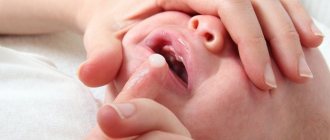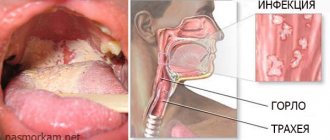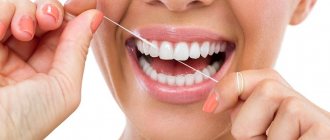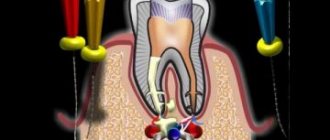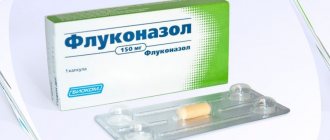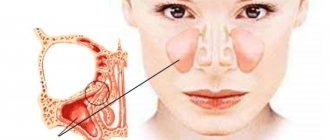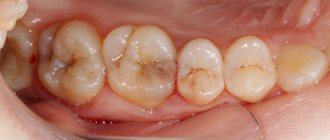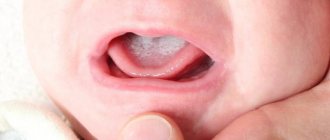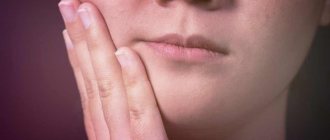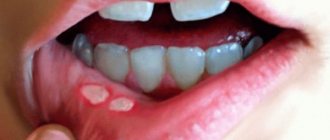Treatment of oral candidiasis includes general and local methods of therapy. Before drawing up a treatment regimen, doctors prescribe to patients a set of laboratory tests that allow them to determine the type of pathogen and select the appropriate medicine to which it will be unstable.
Therapy for the disorder differs for each patient depending on his age, symptoms of candidiasis and individual reactions to certain components of the drugs. To eliminate signs of the problem, therapeutic measures are usually prescribed in combination. They include local treatment of damaged mucous membranes, strengthening the immune system, the use of traditional medicine and diet. Let's take a closer look at each method of combating oral candidiasis.
Without an accurate examination, it is impossible to accurately determine the cause of the fungal disease. Even with obvious signs of candidal stomatitis, the doctor will prescribe a series of tests for the patient.
The main study, the results of which must be taken into account when drawing up a treatment regimen, is a biochemical blood test. The pathological process is indicated by a high number of leukocytes in the biological fluid and a decrease in hemoglobin.
Experts also pay attention to blood sugar levels to rule out diabetes mellitus as a possible cause of the development of oral thrush. To obtain a reliable result, you must take the test 12 hours after your last meal. The blood sugar level of a healthy adult is between 5 and 6.1 units.
Another important analysis for determining the type of pathogen is scraping from the mucous membranes for further PCR diagnostics. DNA fragments of pathological cells are compared with the existing database.
Microscopic analysis allows you to determine the sensitivity of the drug to drugs. The letter “U” or “P” denotes the resistance of pathological particles to a certain group of medications. The abbreviation “DZ” means the weak effectiveness of the antimycotic agent relative to the identified type of pathogen. The letter "H" is used to indicate effective remedies against fungus in the mouth.
General treatment
General therapy of oral candidiasis includes the mandatory use of medications with etiological and symptomatic effects. To combat the causative agent of candidiasis (Candida fungus), the following types of medicines are used:
- Polyene antibiotics (Nystatin, Levorin), used up to 6 times over 2 weeks. Improvement in well-being is usually observed on the 5th day of therapy. If treatment with polyene antibiotics does not bring results, then tablets (Amphoglucamine) or injections of Amphotericin are included in the treatment regimen. The drugs are taken 2 times a day for 14 days.
- Imidazoles in a dosage of 50 to 100 mg per day for a course of up to 20 days. The exact dose of drugs is determined by the doctor depending on the patient’s age and the severity of his illness.
Prevention of thrush
Completely cured thrush may reappear periodically. Relapses are caused by immune disorders in the body. Therefore, the main preventative measure to prevent the development of thrush is hygiene, a healthy lifestyle, a balanced diet, and daily walks. These recommendations are especially relevant when it comes to young children.
Lotin Alexander, medical columnist
31, total, today
( 188 votes, average: 4.62 out of 5)
Stones in the salivary gland: symptoms and treatment
Mesial bite: causes and methods of correction
Related Posts
Local treatment
For local treatment of the oral cavity, those agents are used that do not penetrate into the general bloodstream. They inhibit the development of fungus and eliminate acute symptoms of candidiasis:
- Lysocine and Lysobact with bactericidal properties.
- Iodine-based preparations: Lugol's solution and Yodditsirin.
- Nystatin and Levorin ointment (prescribed in case of formation of a stick in the lip area).
- Anil dyes – brilliant green solution, Fukortsin.
During local treatment of affected oral mucous membranes, it is also important to pay attention to high-quality dental hygiene. It is advisable to temporarily stop wearing removable dentures and orthodontic systems. If there are carious lesions on the enamel, a visit to the dentist will be required.
Local treatment of mucosal candidiasis also includes regular rinsing. The antifungal drugs used reduce the amount of plaque formed and alleviate the symptoms of the disorder. For this purpose use:
- borax solution (2%);
- boric acid solution;
- baking soda solution (1 tsp per glass of water);
- Iodinol solution.
The procedure is carried out every 2-3 hours and after meals. The course of rinsing with antibacterial solutions is 1-2 weeks. If necessary, the duration of treatment is increased until the signs of acute oral candidiasis disappear.
Diagnosis of the disease
When visiting a doctor to find out the cause of the formation of white plaque in the oral cavity, he carries out the following actions:
- examination of the oral mucosa. The area of localization and the nature of the fungal accumulation are determined,
- the anamnesis is studied according to the patient’s outpatient card for the presence of chronic pathologies of internal organs,
- a survey is conducted to determine addiction to nicotine.
The following studies are prescribed as additional diagnostic measures:
- a scraping of the affected area of tissue is taken for a microscopic examination to determine the type of fungus,
- clinical blood test,
- determination of blood glucose indicator,
- if candidiasis of the digestive organs is suspected, endoscopy is prescribed. If a disturbance in the gastrointestinal tract is confirmed, treatment will be prescribed together with a gastroenterologist,
- the extent of the lesion is determined by contrast radiography. To do this, the patient is asked to drink a solution that contains a dye, and an X-ray is taken. Areas of infection change color, which makes it possible to determine their border.
If there is a history of chronic diseases, the patient is referred for consultation to a specialist to coordinate treatment methods (endocrinologist, gastroenterologist, infectious disease specialist).
Folk remedies
If thrush in the mouth persists for a long time, drug treatment is supported by the use of non-traditional remedies. It is advisable to consult your dentist before using each of them. Essential oils will help reduce the severity of burning and speed up the regeneration of wounds resulting from a fungal disease:
Dysbacteriosis in the mouth
- cedar;
- fir;
- lavender;
- tea tree;
- eucalyptus.
Oils are used to rinse the mouth. To do this, add 5-7 drops of oil to 1 glass of water and carry out 3-5 procedures per day. Treatment is not stopped even after the symptoms of candidiasis disappear. Rinsing continues for several days after this.
Vegetable and berry juices allow you to cure mycosis faster. They contain valuable microelements that have antiseptic and anti-inflammatory properties. Among the most valuable types of juices in the treatment of candidiasis are:
- garlic;
- cranberry;
- lingonberry;
- onion;
- carrot.
The juice is consumed 3 times a day or the product is used to treat the mucous membranes of the mouth up to 5 times a day. The duration of use of vegetable and berry juices is at least 7 days.
An effective way to treat oral candidiasis is the use of medicinal plants. Some of the herbs have a complex effect on the body. Teas, tinctures, and decoctions are prepared from plant materials and used to rinse or irrigate the oral cavity.
To prepare decoctions 1 tsp. l. any plant material is poured with 1 glass of boiling water and left for 1-2 hours. Rinsing with a folk remedy is performed 5 times a day for 10 days.
Herbs that have a pronounced effect against Candida fungi:
- St. John's wort;
- calendula;
- wild rosemary;
- Oak bark.
The medicine can be prepared from one herbal ingredient or mixed several medicinal herbs. In the latter case, the effect of using the decoction will be more pronounced.
Another unconventional way to combat thrush is the use of applications. Before the procedure, it is advisable to clear the mucous membranes of white plaque in the mouth. The preliminary procedure will increase the effectiveness of candidiasis therapy with applications.
Folk remedies suitable for oral applications:
- Honey. The product is applied in a thin layer to the affected areas and kept in the mouth until completely dissolved. It is characterized by powerful anti-inflammatory and bactericidal properties. It is not recommended to use honey at elevated temperatures and for children under 3 years of age.
- Sea buckthorn or rosehip oil. A gauze pad is soaked in oils and applied to the problem area for 5 minutes, 3 times a day. The amount of application may be increased in case of severe thrush.
The duration of the fight against the disease with the help of applications is up to 2 weeks. After symptoms disappear, therapy should be continued to prevent relapse of oral candidiasis.
How does thrush develop?
Fungi located on the surface of the skin and mucous membranes of the mouth, as a result of suppression of immune factors, are able to penetrate cells. In the new environment, they begin active growth and reproduction. The waste products and enzymes released by fungi lead to cell destruction. At the site of development of the process, all signs of inflammation appear with redness, swelling of tissues, pain, itching, and local fever.
At the height of manifestations, a white coating appears on the affected areas, resembling a milky-curdled mass, which consists of dead skin cells and mucous membranes, fibrinous elements, and dead bacteria.
Plaque at the beginning of the disease is represented by milky dots, which gradually increase in number and size, then merge and form plaque-like films, which eventually merge into one. Films cover the inner surface of the cheeks, cover the tongue, and grip the gums. If the process goes further, then thrush appears on the palate, tonsils and moves lower into the respiratory tract. Sometimes there are generalized forms that spread throughout the body.
Diet
An important part of treating oral thrush in adults and children is following a diet. Flour products, sweets and smoked foods aggravate the course of the disease and lead to the spread of Candida fungi to large areas of the mucous membranes. During the acute stage of the pathology, doctors advise patients to consume only warm food that is crushed to a puree-like consistency. Prohibited foods are excluded from the diet for 3 months from the moment the symptoms of thrush completely disappear.
The list of permitted and prohibited products for oral candidiasis is presented in the table:
| Forbidden | Allowed |
| Confectionery | Cereals |
| Sour fruits | Baking without yeast |
| Yeast | Vegetables |
| Cafe, tea | Greenery |
| Sauces: mayonnaise, ketchup, mustard | Fermented milk products |
| Fatty fish and meats | Flaxseed and olive oil |
| Smoked meats | Dried fruits |
| Pickles | Seeds and nuts |
| Alcohol | Lean meats and fish |
The diet is not able to independently eliminate aggravated thrush, but it will speed up the recovery of adults and children.
Weekly diet for patients with oral thrush:
Monday: morning – salad with vegetables and boiled eggs; lunch – vegetable soup with a small piece of yeast-free bread; evening - boiled fish or chicken breast.
Tuesday: morning – low-fat cottage cheese and sour cream; lunch – boiled chicken; evening - fish with vegetables and rosehip tea.
Wednesday: morning – omelet with orange juice; lunch – cottage cheese casserole or cheesecakes; evening - buckwheat or pearl barley porridge with boiled meat.
Thursday: morning - carrot or tomato juice; lunch - tomato or cheese soup, sandwich with cheese; evening – rice with vegetables.
Friday: morning – pearl barley porridge; lunch - omelet; evening - fish with vegetables or cereals.
Saturday: morning – low-fat yogurt with nuts; lunch – boiled rice with lean meat; evening - kefir.
Sunday: morning – cheese sandwiches; lunch – stewed potatoes with chicken breast; evening – boiled fish with buckwheat without adding spices.
The final menu for patients is drawn up by the doctor, taking into account the symptoms and course of oral candidiasis.
Treatment of children
Children who show signs of candidiasis cannot sleep peacefully and eat normally. Parents are not recommended to independently remove plaque from the surface of the affected structures in the child, as this can lead to even more unpleasant consequences than candidiasis.
The treatment regimen for the disease in children is as follows:
- Local treatment of damaged mucous structures. White plaque is treated with a weak solution of potassium permanganate 3 times a day. It is necessary to monitor the concentration of the product, as the bright pink solution can cause burns to the surface being treated.
- Using a soda solution to combat candidiasis in infants. For this, 1 tsp. dry substance is dissolved in a glass of water and used to wipe damaged structures.
- Treatment of damaged areas with linden honey. For babies, the product can be applied to a pacifier.
How to treat oral mycosis in older children? To combat the signs of candidal stomatitis, a number of medications are prescribed:
- Candide is a preparation for local use in the form of a solution (daily dosage: 20-30 drops);
- Nystatin - up to 3 years of age, 250 thousand units are prescribed. drug, after 3 years – 500 thousand units.
The oral cavity for thrush in young children is treated with Candide solution
During pathology therapy, children should also adhere to a certain diet with the exception of carbonated drinks, sweets, store-bought juices and roughage. Babies need to regularly clean their pacifier to avoid the spread of infection in the body.
Features of oral thrush in women
Clinical manifestations in men and women occur practically without differences. It should be noted that women are more susceptible to the disease, especially during puberty, pregnancy, and menopausal changes. Against the background of these processes, significant hormonal changes occur in the body, which often leads to immune problems. Therefore, the existing fungal flora can give active growth and reproduction, causing the blooming symptoms of thrush.
What not to do
Certain actions can make candidal stomatitis worse. Prohibited activities include:
- Taking antibiotics. Agents in this group can only act on bacteria. The use of drugs is allowed only for secondary infection of problem areas of the mucous membranes, but their use must be agreed with a doctor.
- Following a low-calorie diet. The lack of useful vitamins and microelements leads to the fact that the body does not have enough strength to fight the causative agent of candidal infection. The only restriction that should be strictly adhered to during treatment is avoidance of carbohydrate-containing foods.
- Independent interruption of the course of therapy. The course of treatment and its scheme are prescribed by the doctor only after identifying the type of fungus in the body. A shortened course of taking medications threatens the transition of candidiasis from the acute to the chronic stage.
- Change of drugs. You cannot replace products prescribed by a doctor with analogues at a lower price. Each medicine is selected by the doctor individually, based on the results of laboratory tests.
- Refusal to take potent medications. Some forms of candidiasis require the use of hormones and immunosuppressants. Their exclusion from the treatment regimen can lead to a recurrence of thrush in a short time.
When fighting candidiasis, it is also important to treat chronic diseases, which are the trigger for the activation of the fungus in the body. Therapy for advanced forms of pathology is long and difficult, often with the use of glucocorticosteroids and sedatives. Therefore, it is easier to prevent candidiasis or treat it competently in the early stages of development.
Causes of white plaque
Activation of the Candida fungus occurs under the influence of the following endogenous and exogenous factors:
- weakened immunity, which causes infection of the oral cavity or internal organs,
- periods accompanied by hormonal imbalances (pregnancy, menopause),
disruption of the gastrointestinal tract system,
- endocrine diseases (diabetes mellitus, thyroid disease),
- long-term treatment with antibiotics, causing changes in the microflora of the oral cavity and the development of dysbacteriosis,
- taking corticosteroid drugs and hormonal contraceptives,
- lack of vitamins B, PP and C in the body,
- smoking and drug use,
- chemotherapy for cancer,
- mechanical damage to the mucous membrane, accompanied by the appearance of wounds,
- denture material that provokes allergic reactions and microtraumas,
- HIV,
- tuberculosis,
- pathologies of the adrenal glands,
- dental diseases of teeth and gums (caries, periodontal disease),
- metabolic disorder,
- constant stressful situations and physical strain,
- hepatitis C,
- dysfunction in the functioning of the salivary glands, leading to disruption of the production of their secretions.
Reviews
Irina, 25 years old. It is wrong to consider thrush a purely female disease. Several years ago, my husband was diagnosed with oral thrush. He developed a light coating on his tongue, upper palate and corners of his lips. He had difficulty swallowing and chewing food. The dentist prescribed him Levorin and Amphoglucomin (2 times a day after meals). He treated the damaged areas with dekimin ointment. This treatment helped to cope with the signs of thrush in 6 days without further relapses.
Tatyana, 31. Treated oral candidiasis for her child after childbirth. The pediatrician said that this phenomenon often occurs in newborns due to weak immunity. We treated the problem with a soda solution and Miramistin. We dealt with the disease in a day. But I must say that it was mild for us.
Vitaly, 37 years old. I suffered for a long time from thrush in my mouth and could not identify the cause of its constant exacerbation. I tried all possible antimycotic ointments, but they did not bring the desired result. After much suffering, I turned to an immunologist for help, who prescribed me Lykopid (a drug to boost immunity). It's been a year since I forgot about the problem. I think that in my case, thrush was caused precisely by the weakening of the body’s defenses.
Symptoms of thrush in the mouth
The disease can develop over several hours, sometimes days and even weeks.
The patient is concerned about:
- discomfort in the mouth, dryness, itching;
- the appearance of white and yellowish spots on the mucous membrane, which gradually merge and turn into a continuous coating;
- red, inflamed mucous membrane under plaque, which may become ulcerated and bleed;
- itching accompanied by burning; painful sensations increase, taste sensations change, a taste with a “metallic” tint appears;
- swallowing disorders and a feeling of a lump in the throat - occur when candidiasis spreads to the area of the pharyngeal mucosa;
- with a large area of the affected surface - increased body temperature;
- skin in the corners of the mouth becoming cracked; there is an unpleasant odor from the mouth;
- pain when eating sour, salty, spicy foods.
